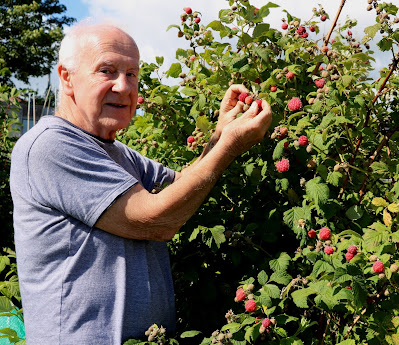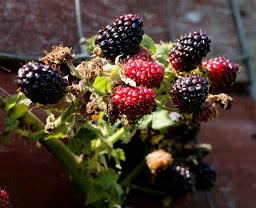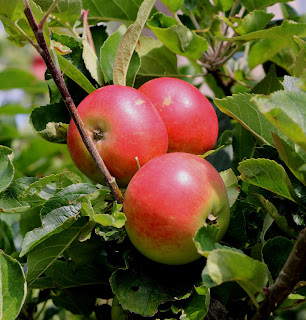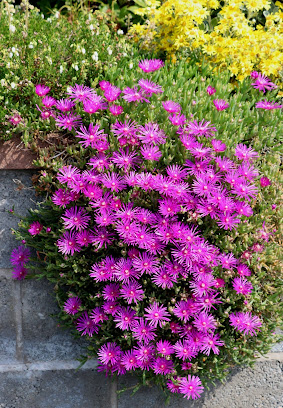PLANTS FOR SPRING
As the summer flowers begin to fade we look ahead to next year for the spring flower displays. This is the time to organise the planting of wallflower, pansies, polyanthus, myosotis and bulbs of numerous kinds including daffodils, tulips, hyacinths, crocus, snowdrops and aconites. Hanging baskets are perfect for pansies and polyanthus.
 |
| Tulip Red Emperor |
I make mine up then keep them over the winter in a cold greenhouse. This protection helps to bring them into flower a few weeks earlier than if left outside, but keep a lookout for greenfly and black spot fungal disease and spray with a combined insecticide and fungicide recommended for roses. Baskets can go back outside in March as the greenhouse starts to fill with other plants. Flower pots, tubs and borders can have any spring bedding plants but only use wallflower where height is not a problem. The flower displays benefit from under planting with tulips.
 |
| Daffodils |
Use the taller Darwin Hybrid tulips such as the red Apeldoorn and Golden Apeldoorn with wallflower, but with other low growing bedding such as pansies it is better to choose a dwarf tulip such as the dwarf double, Red Riding Hood, Abba, Negrita, Sun Lover and Peach Blossom. If you want to start the show early try Scarlet Baby which will flower in March same time as many saxifrages so try grouping these together. Good tulips to follow these are the Fosteriana Red Emperor and the white Purissima, both quite early and the latter claimed to be scented, but I have never detected any scent on mine. However for a good scent use some hyacinths such as the red Jan Bos, Pink Pearl or Delf Blue,especially in tubs around doorways and on the patio where the scent will be noticed and appreciated. Both daffodils and narcissus come with scent and several are quite strong.
 |
| Tulip Showcase |
The Jonquills and Cheerfulness are well scented as are large trumpet white flowered Mount Hood. These bulbs can all be retained next year after flowering as it is easy to find a spot for them in flower borders and amongst deciduous shrubs and trees. However it is the snowdrops that start the show in early February, but in these recent times of mild winters they are often in flower in December in sheltered spots. Plant these in decent sized drifts spacing the bulbs about four inches apart. In time they soon reseed themselves and the drifts intensify and get bigger. Snowdrops are followed by the yellow aconites, Eranthus hyemalis, which are quick to spread and develop large intense drifts as they produce ample seeds which germinate readily.
 |
| Wallflower |
However watch them carefully as in the first year they only produce seed leaves and in the second year produce one single leaf. However patience is rewarded as they flower in the third year. Crocus planted in large drifts make the next garden display. I can find a space somewhere every year for planting more crocus. I often use them amongst tubs of pansies then after flowering they get replanted in borders. Another three favourite dwarf bulbs to add to the show are the blue flowered Chionodoxa, Anemone blanda and Grape Hyacinths. All of these bulbs lend themselves to companion planting. I also buy in some Oriental Lilies every autumn and these have their own border, but as they flower in summer I like to plant them amongst grape hyacinths and tulips and gladioli. They are all happy together each planted at different depths and give us a display from spring with the grape hyacinths and tulips then in summer with the lilies and gladioli.
Wee jobs to do this week
 |
| Geranium cutting |
Lift End of September is a good time to take some geranium cuttings from strong stocky plants in beds, tubs and hanging baskets. Break off the top three inches of shoots and insert into cellular trays with potting compost with added grit for good drainage. Keep in a cool greenhouse but protected from sun, then in November transfer to a windowsill for over wintering. Once rooted they will continue to grow so remove flowers and the growing point to encourage branching and use the removed shoot as another cutting. They will all make sturdy plants for planting out next year. END














































